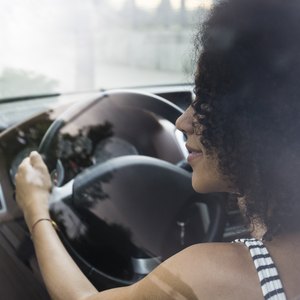
Most states require you to maintain a minimum level of auto insurance before you can register your car or drive it on state roads. Typically, all that is required is liability insurance that will cover property damage and injuries to other individuals if you are involved in an at-fault accident. Car insurance follows your car, so in most cases anyone who drives it is covered, even if they are not listed on your policy. However, there are exceptions.
Tips
As long as you give the person permission to drive your car, your insurance policy will usually cover the driver. Some exceptions may include if the person lives in your household but isn't named on your policy, or if the driver ends up using the car for something beyond what you agreed to.
Occasional Drivers
Two kinds of drivers are covered by your car insurance: those listed on your policy, and occasional drivers. Listed drivers are people who have regular access to your car, can be expected to drive the vehicle at least periodically and are included as drivers on your policy. Listed drivers typically include yourself and members of your household who have a valid driver's license. Occasional drivers are people who are not members of your household and don't have regular access to your car.
For example, suppose your 23 year-old daughter lives across town and occasionally visits. She does not have regular access to your car and is not listed as a driver on your insurance policy. She is an occasional driver and would probably be covered if she borrowed your car. If a family member who lives in your household is not listed on your policy, she might not be covered if she borrows your car.
Drivers Need Permission
Your car is usually covered by your insurance if the person who borrows it does so with your permission. That permission can be either written, verbal or implied, but it must exist. If someone borrows your car without your permission, that driver might not be insured. For example, if you give a friend permission to drive your car to the dentist for a checkup, he is covered. If your friend then drives your car out of state to see his girlfriend who is away at college, he might not be covered, since you did not give him permission to use your car for that purpose.
Policy Limitations
A non-listed person who drives your car is typically covered up to the limits of your policy. Your insurance serves as the primary policy. If that person is involved in a serious accident resulting in costs that exceed your policy, her insurance might cover the excess as a secondary policy.
Financial Ramifications
You might be a perfect driver with no moving violations and no accidents on your record, but if you loan your car to a friend and she has an accident, it is reflected on your insurance policy. If you have a deductible, you are responsible for paying it. Your insurance rates might increase as a result of the accident, even though you were not personally involved in it. If your friend doesn't have insurance and the damages caused by the accident exceed the limits of your policy, you could be held personally liable for damages and medical costs.
References
- Esurance: Myth: Car Insurance Follows the Driver
- Insure.com: Ask the Car Insurance Expert
- State Farm: Can Someone Else Drive My Car?
- Lawcore: Car Accident Statistics
- Insurance Information Institute: Eight Auto Insurance Myths
- Insure.com: Minimum Car Insurance Requirements
- Esurance. "Excluded Drivers: Does Everyone in Your Home Need to Be Insured?" Accessed April 18, 2020.
- Esurance. "Adding or Removing Cars and Drivers." Accessed April 18, 2020.
- Esurance. "Who's Covered Under My Car Insurance Policy?" Accessed April 18, 2020.
- Insurance Information Institute. "8 Auto Insurance Myths." Accessed April 18, 2020.
- Esurance. "Myth: Car Insurance Follows the Driver." Accessed April 18, 2020.
- Erie Insurance. "Ask ERIE: Whose Insurance Pays When Your Friend Crashes Your Car?" Accessed April 18, 2020.
- Allstate. "My Teen Got a Learner's Permit. Does He Need Car Insurance?" Accessed April 18, 2020.
- State Farm. "Can Someone Else Drive My Car?" Accessed April 18, 2020.
- American Family Insurance. "Does Car Insurance Cover Other Drivers?" Accessed April 18, 2020.
- Esurance. "Excluded Drivers: Our Insurance Expert Answers Your Questions." Accessed April 18, 2020.
Writer Bio
Mike Parker is a full-time writer, publisher and independent businessman. His background includes a career as an investments broker with such NYSE member firms as Edward Jones & Company, AG Edwards & Sons and Dean Witter. He helped launch DiscoverCard as one of the company's first merchant sales reps.

